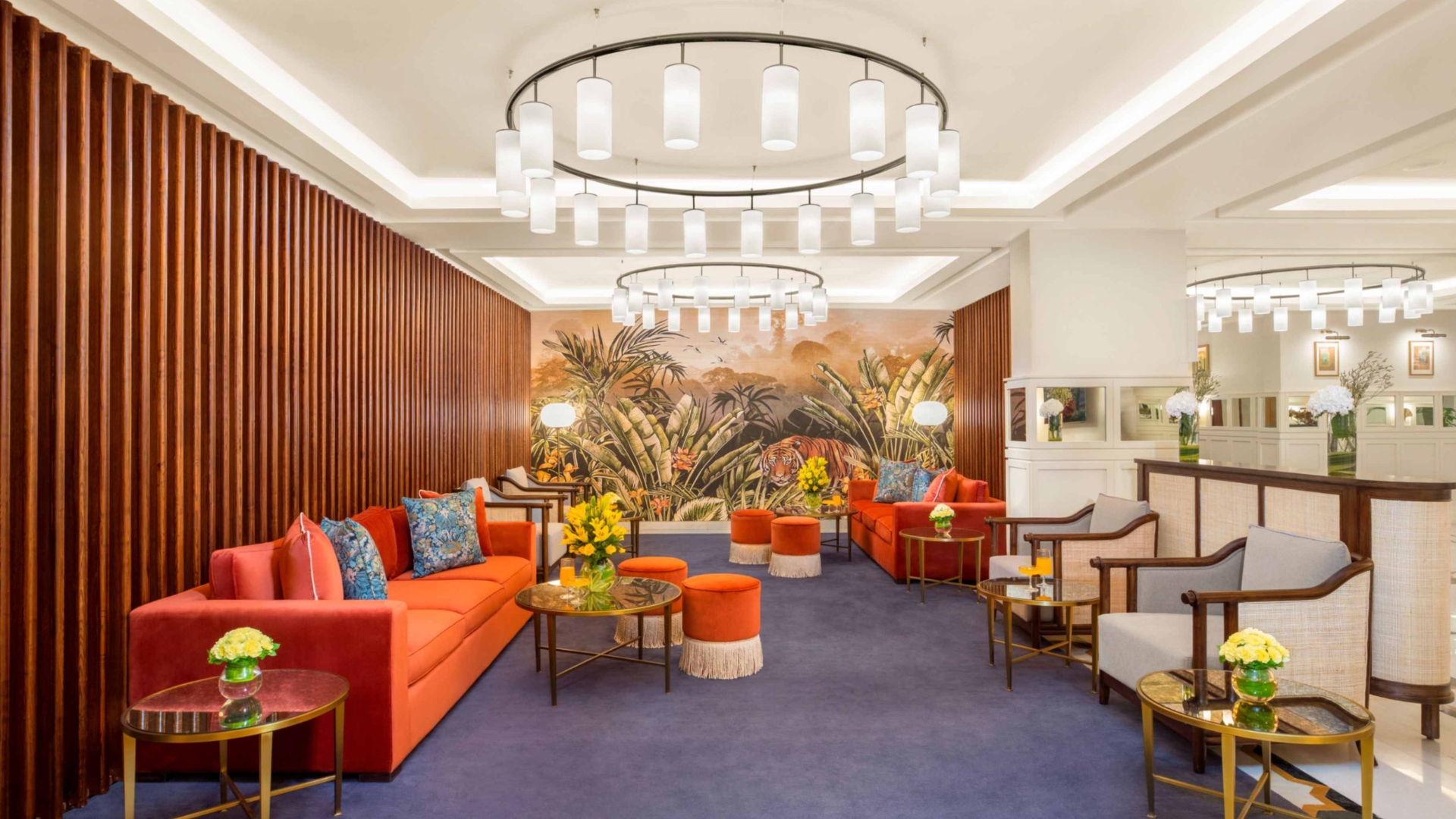Guardians Of Craft
Global hospitality brands are embracing cultural preservation beyond architecture. Reviving local arts and crafts can become a new frontier in authentic luxury experiences.
By Chandreyi Bandopadhyay
Beyond marble lobbies, ornate chandeliers and plush bedding, India's luxury hotels are embracing a profound new purpose—of becoming living museums where ancient crafts breathe and traditional artistry flourishes against contemporary backdrops. As globalisation threatens to homogenise cultural experiences, hotels today emerge as unexpected sanctuaries of heritage, where forgotten crafts find voice as skilled hands continue centuries-old traditions.
Once the exclusive domain of boutique properties, cultural stewardship flourished naturally within the intimate confines of Rajasthan's heritage havelis and Madhya Pradesh's wilderness retreats. Homegrown brands like CGH Earth, Brij Hotels, and Pugdundee Safaris established their identities through profound community connections, weaving local traditions into immersive guest experiences.
A remarkable transformation now ripples through the hospitality landscape. Luxury giants and international flagships—once defined by standardised opulence that could exist anywhere—are embracing regional authenticity with passion. This shift reflects more than shrewd business calculus capturing the experiential travel market, signalling a deeper awakening to their role as custodians of cultural bequest. Brands are increasingly recognising that true luxury lies not in isolation from their surroundings but in meaningful celebration of the cultural soil from which they rise—a responsibility to heritage that enriches both guest experience and community legacy.
Ran Baas, The Palace in Patiala, plays host to cultural gatherings like music festivals and art residencies beyond aesthetics. “We see immense opportunity in connecting our rich craft legacy with the modern hospitality experience,” opines Deep Mohan Arneja, General Manager, Relais & Châteaux Ran Baas, The Palace. “While there are areas such as supply chain support, product standardisation, and digital accessibility that need more structure, these are also precisely where innovation and collaboration can thrive.”
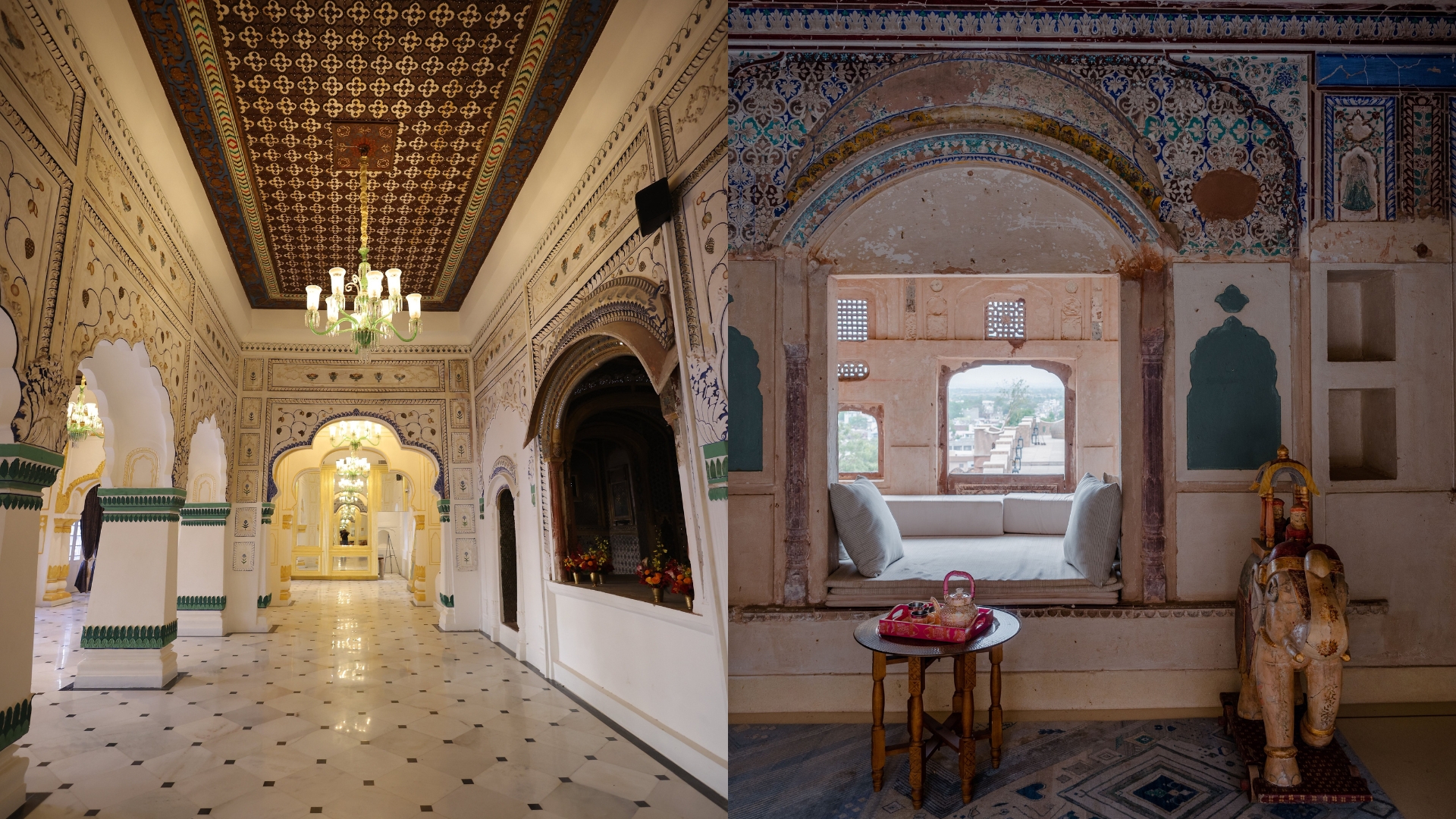
Ran Baas, The Palace in Patiala takes a walk down the corridor of crafts. Right: Six Senses Fort Barwara retains its ancient charm in design and decor.
A cultural renaissance in hospitality
Step through the doors of TajView Agra and witness this transformation firsthand. From your window, the ethereal silhouette of the Taj Mahal commands the horizon, while inside, equally compelling stories unfold in silent splendour—delicate marble inlay work in décor, intricate jaali screens casting geometric shadows across burnished floors. “Here, opulence serves a higher purpose, each decorative element a deliberate homage to the artistic legacy of Agra's master craftsmen,” explains Manpreet Chabba, General Manager of the IHCL SeleQtions property.
It extends to immersive cultural stewardship. “In line with our Paathya initiative, we support and promote local artists with a platform to showcase their masterpieces within our hotel, at no additional cost,” Chabba informs. Casual moments become cultural encounters as artisans from Ferozepur transform the hotel lobby into a marketplace of shimmering glass bangles daily, while high-tea service elevates local delicacies like kachoris and pethas on Khurja ceramics—turning sustenance into storytelling.
While 11 meticulously curated experiences transport guests into the living workshops of tradition, from the golden thread artistry of zardozi embroiderers to the mathematical precision of parchin kari (marble inlay craft) at TajView Agra, Fairmont Jaipur integrates Rajasthani craftsmanship throughout its design. The hotel has hosted several heritage-focused events—showcasing handcrafted textiles threatened by modern manufacturing, pichhwai painting workshops featuring devotional art. Recently, an exhibition of analog photographs documented Rajasthan's festivals, traditional transport, craftsmanship, and architecture.
Organisations such as Princess Diya Kumari Foundation are helping to highlight female artisans specialising in traditional block printing. The Leela Palaces, Hotels and Resorts has a straight strategy to uplift India’s cultural heritage. “Through signature initiatives such as Nakshatra, Aujasya, and Icons of India by The Leela, we pay homage to India’s artistic lineage—from holistic wellness traditions to collaborations with modern-day custodians of culture, each rooted in authenticity and grace,” says Anuraag Bhatnagar, Chief Executive Officer.
Beyond décor, these initiatives foster sustainable livelihoods while deepening cultural connections. A much needed stance, given homegrown brands like CGH Earth has stood as a thoughtful custodian of heritage, embracing local environments and communities long before conscious luxury became fashionable. Their properties showcase and encourage guests to explore remarkable traditional arts—from Swamimalai's lost wax casting to Thirubhuvanam's silk weaving, where creating a single heirloom saree on century-old handlooms takes months.
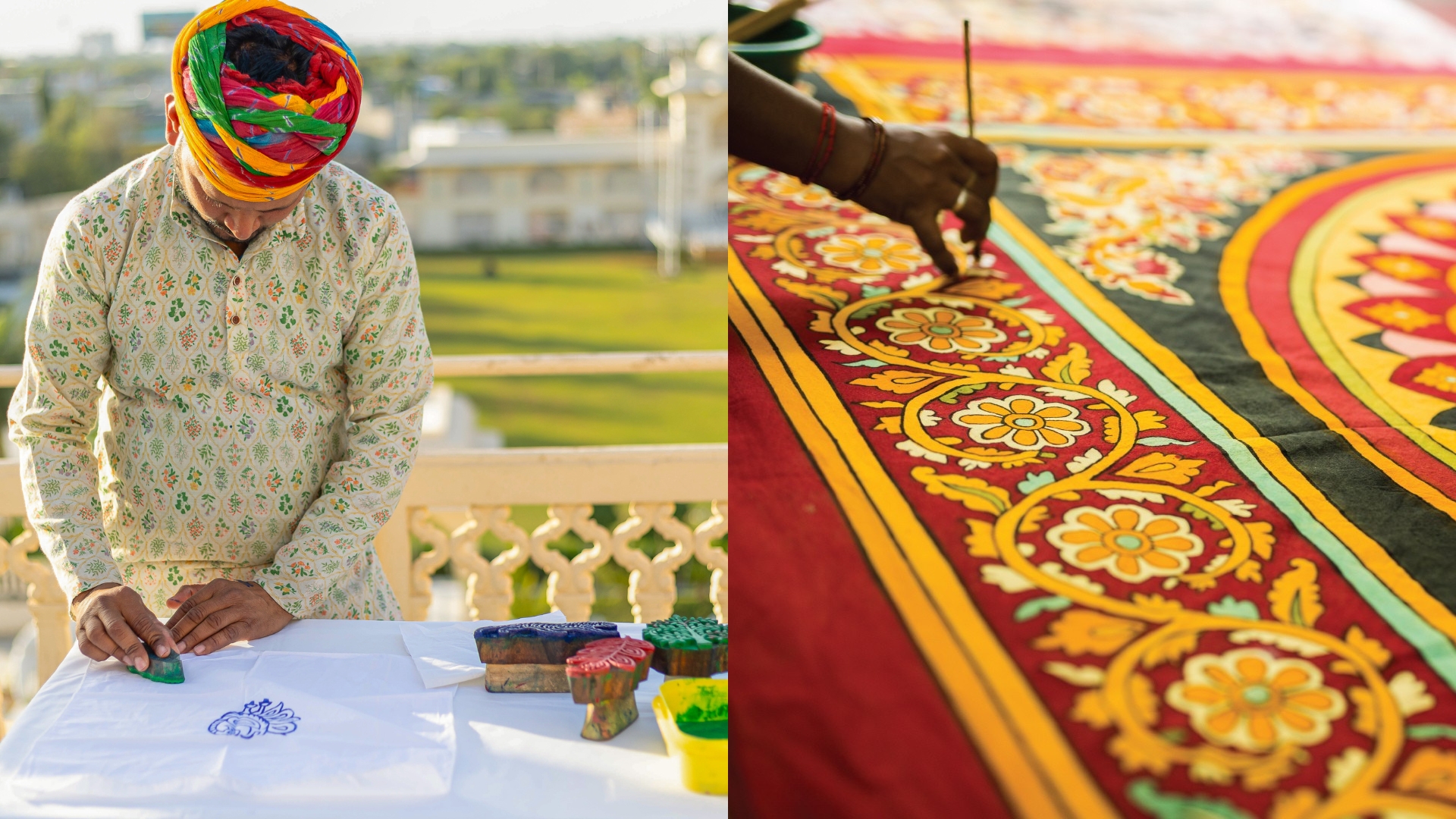
Block print workshop at Anantara Jewel Bagh Jaipur. Right: Kalamkari paint workshop at CGH Earth Mantrakoodam.
Through signature initiatives such as Nakshatra, Aujasya, and Icons of India by The Leela, we pay homage to India’s artistic lineage—from holistic wellness traditions to collaborations with modern-day custodians of culture, each rooted in authenticity and grace.
Anuraag Bhatnagar
Chief Executive Officer, The Leela Palaces, Hotels and Resorts

Beyond heritage hubs
In the heart of Hyderabad, The Leela is now transforming hospitality into cultural safekeeping. A vintage Rolls-Royce once owned by the Nizams at the entrance announces this mission with regal authority. Gold leaf motifs adorn the dome at the arrival lobby, flanked by a portrait gallery of people integral to Hyderabad's multifaceted soul and an ode to Dakhni cultural heritage. “Our interiors are adorned with murals reminiscent of Machilipatnam chintz and Kalamkari traditions and feature iconic works by artists like M.F. Husain and Laxman Aelay. Every corner is curated to tell a story,” informs Rajesh Gopalakrishnan, General Manager at The Leela Hyderabad.
From the distinctive patterns of handwoven Pochampally textiles to the ancient Bidri metalwork involving silver inlay on blackened alloy, tradition echoes throughout the hotel. In shadowed corners, delicate leather puppets of Tholu Bommalata cast ethereal silhouettes, breathing life into an ancient storytelling tradition. At The Wild Teapot café, walls bloom with handpainted Kalamkari artistry where botanical tendrils playfully conceal macarons and teacups, creating a curious visual feast. This thoughtful integration continues throughout the 156 rooms and suites, echoing Qutub Shahi architectural principles.
Before Ran Baas, Apeejay Surrendra Park Hotels Limited (ASPHL) attempted to balance preservation with innovation through a 'Maximalist approach' for The Lotus Palace in Kanadukathan in Tamil Nadu. Maintaining the original Chettiar home character while incorporating modern design elements, the restoration preserved signature architectural features like floor tiles referencing athangudi patterns, with curated antiques and eclectic furniture honouring the region's trading heritage. This sensitive renovation transforms the 15-room heritage property into what Chairperson Priya Paul describes as “a hotel that emboldens our commitment to honouring and preserving India's diverse legacy, by carefully turning historic spaces into living stories, that are Anything but Ordinary™ experiences for those who seek a unique blend of history, art, and culture."
Similarly at Six Senses Fort Barwara, the 14th-century fort was restored and renovated over a decade to ensure it reflects the authentic beauty of Rajasthan. Responsible restoration of the original architecture and artworks with minimal renovation helped retain intricate artistic details.
The need to be culturally sensitive reflects across Accor properties in Vishakhapatnam. “We celebrate local artistry by collaborating with talented creators and artisans, transforming our spaces into vibrant cultural hubs,” says Lakshmi Sridhar, General Manager, Novotel Visakhapatnam Varun Beach and Varun Beach Bheemili Resort. Partnerships bring events like art brunches, immersive photography experiences and more—showcasing the work of painters, illustrators, and even poets.
Beyond physical heritage, experiences also add a charming touch to this trend. Interactive workshops at St. Regis Goa resort include mandala art, quilling, bracelet crafting, coconut leaf origami, canvas painting, and sandcastle building—providing a platform for local artisans to share their skills with an international audience. “These initiatives reflect the brand’s timeless elegance and Marriott’s Serve360 ethos, championing meaningful impact through local collaboration and sustainability,” explains Jaya Acharya, Director, Marketing & Communications.
From feni-making masterclasses, where guests can immerse themselves in the art of distilling Goa’s iconic spirit, to collaborations with local beverage makers to host pop-ups and tasting sessions, the hotel provides a platform to Goa’s flourishing craft beverage scene.
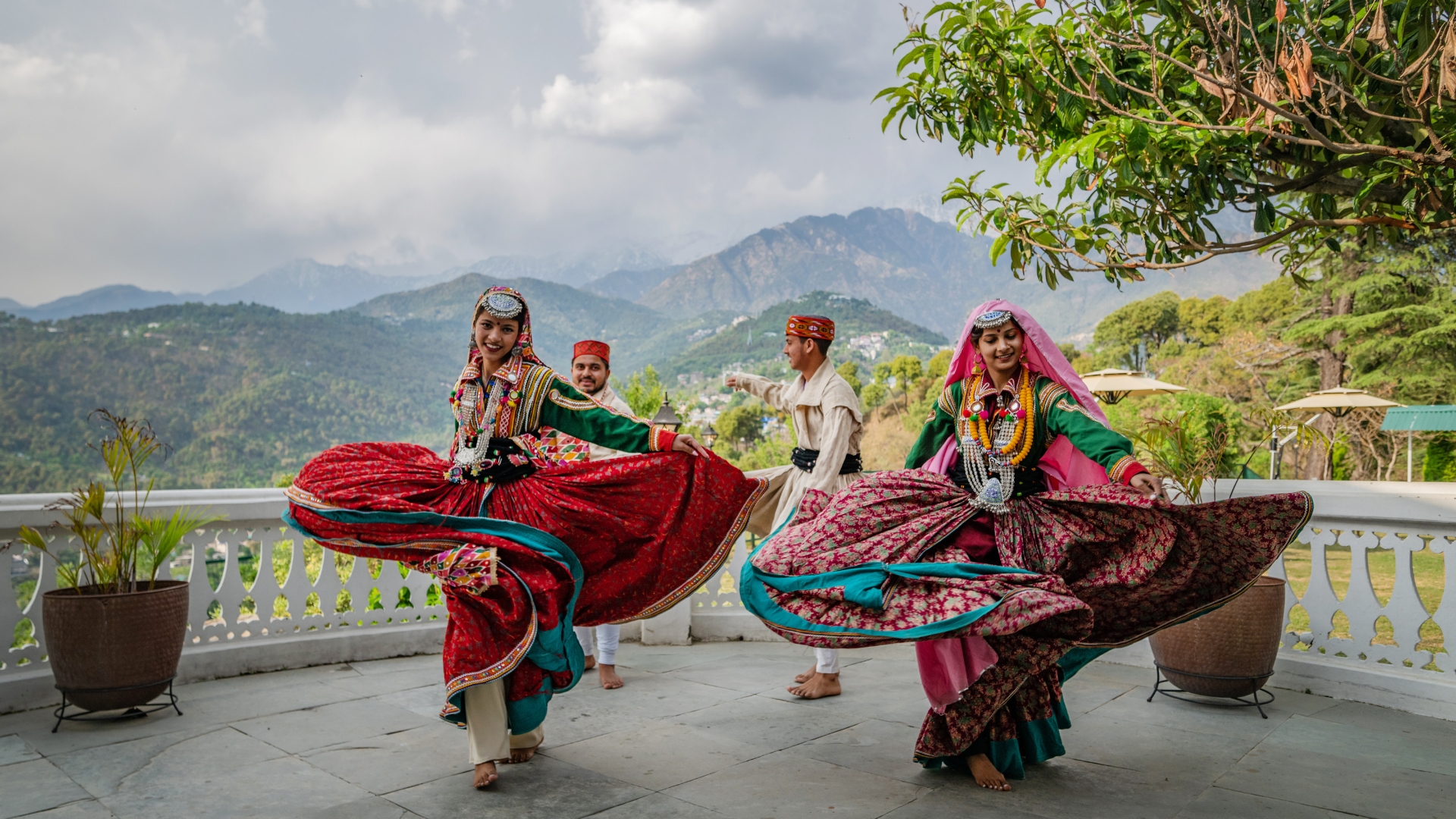
Performance by locals at Brij Anayra, Dharamshala.
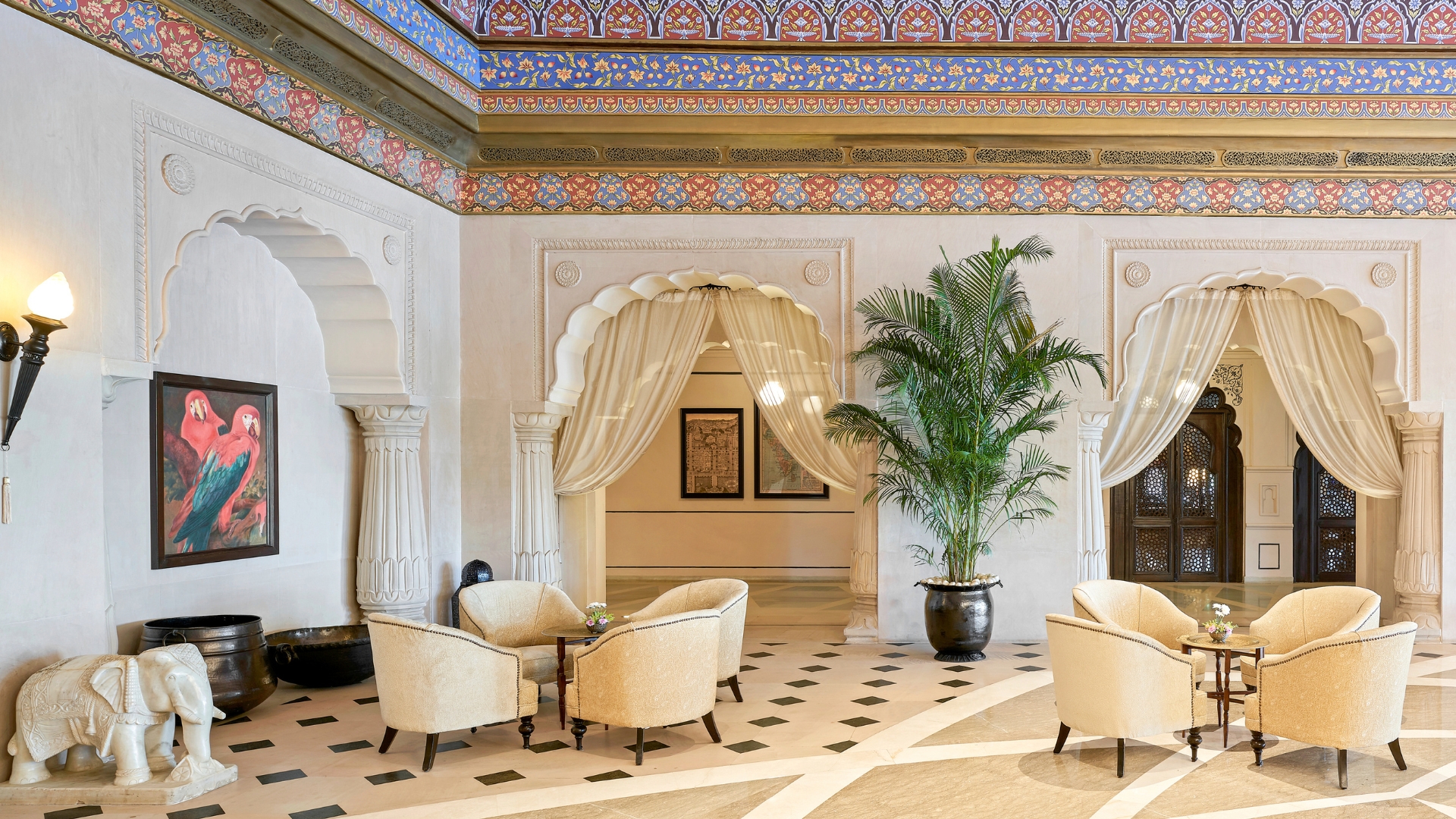
Anjum, the tea lounge at Fairmont Jaipur showcases local art styles.
We celebrate local artistry by collaborating with talented creators and artisans, transforming our spaces into vibrant cultural hubs.
Lakshmi Sridhar
General Manager, Novotel Visakhapatnam Varun Beach and Varun Beach Bheemili Resort

Why now?
Hospitality, at its heart, is an act of storytelling. And no story can be complete without culture, people, and the hands and voices that shape the identity of a place. “For indigenous and international hospitality brands alike, there exists a unique responsibility—to serve not just as hosts, but as cultural stewards,” voices Jahnvi Singh, Creative Head at House of Rohet, a Relais & Châteaux offering. This philosophy resonates today with brands seeking to showcase regional culture through immersive experiences. Bhatnagar echoes this sentiment: “Hospitality owners possess a distinct opportunity to reshape the trajectory of cottage industries, not just by showcasing local crafts, but by embedding them into the very fabric of luxury experiences.”
Take Atmosphere Hotels & Resorts, known for their chic Maldivian offerings, now moving to heritage properties with the opening of Sadar Manzil in Bhopal. While the premises already blend marvelous Indo-Saracenic and Mughal architecture, experiential offerings like a champagne tour of the stories within the building appeals to a more discerning guest.
Singh says, “Including local heritage in hospitality ensures the continuity of traditions that risk being forgotten, dignifying generations of knowledge and technique.” It is a fact that is neither dismissable, nor ignorable in modern hospitality that continuously strives to be a bridge between the history of a destination with the visitors.
Minor Hotels' debuted in India with Anantara Jewel Bagh in Jaipur, offering guests exclusive cultural experiences, from royal art and heritage walks on the property to private puppeteer performances. This approach reinforces the brand's commitment to honouring its new destination.
While international brands often present templatised formats to showcase local history, boutique hotels offer a leaf out of their books. "At Brij, artisanal heritage isn't merely decorative,” says Udit and Anant Kumar, the founders of Brij Hotels. “From handwoven Rabari textiles and reclaimed wood furniture at Brij Pola to the slate flooring and Kumaoni woollens at Brij Atmanya, we integrate local craftsmanship into every aspect of the design and experience.” Grammy winner Pandit Vishwa Mohan Bhatt has played at Brij Rama Palace in Varanasi.
Gopalakrishnan reflects on breaking the temptation of templatisation. Pochampally Ikat fabrics sourced directly from weaver clusters adopted by his hotel are used for suits and staff attire at the hotel. “Our commitment goes far beyond aesthetics as we are deeply invested in sustaining the communities that uphold these time-honoured traditions.”
Brij promotes living galleries where guests can engage with regional artistry—dining on hand-thrown pottery, sleeping beneath indigenous textiles, and connecting directly with the creators. “This transforms craft appreciation from passive admiration into a deeply immersive cultural experience that sustains traditions while creating meaningful connections,” the Kumars elucidate.
Singh points out the differentiating factor further. “Our family’s connection to this land spans over four centuries. We are not outsiders curating an experience but a part of the living history of Rohet, and that legacy informs every aspect of our brand ethos—to create deeply human luxury, rooted in place, and alive with tradition.” A fact that is slowly being accepted and adapted to, by others.
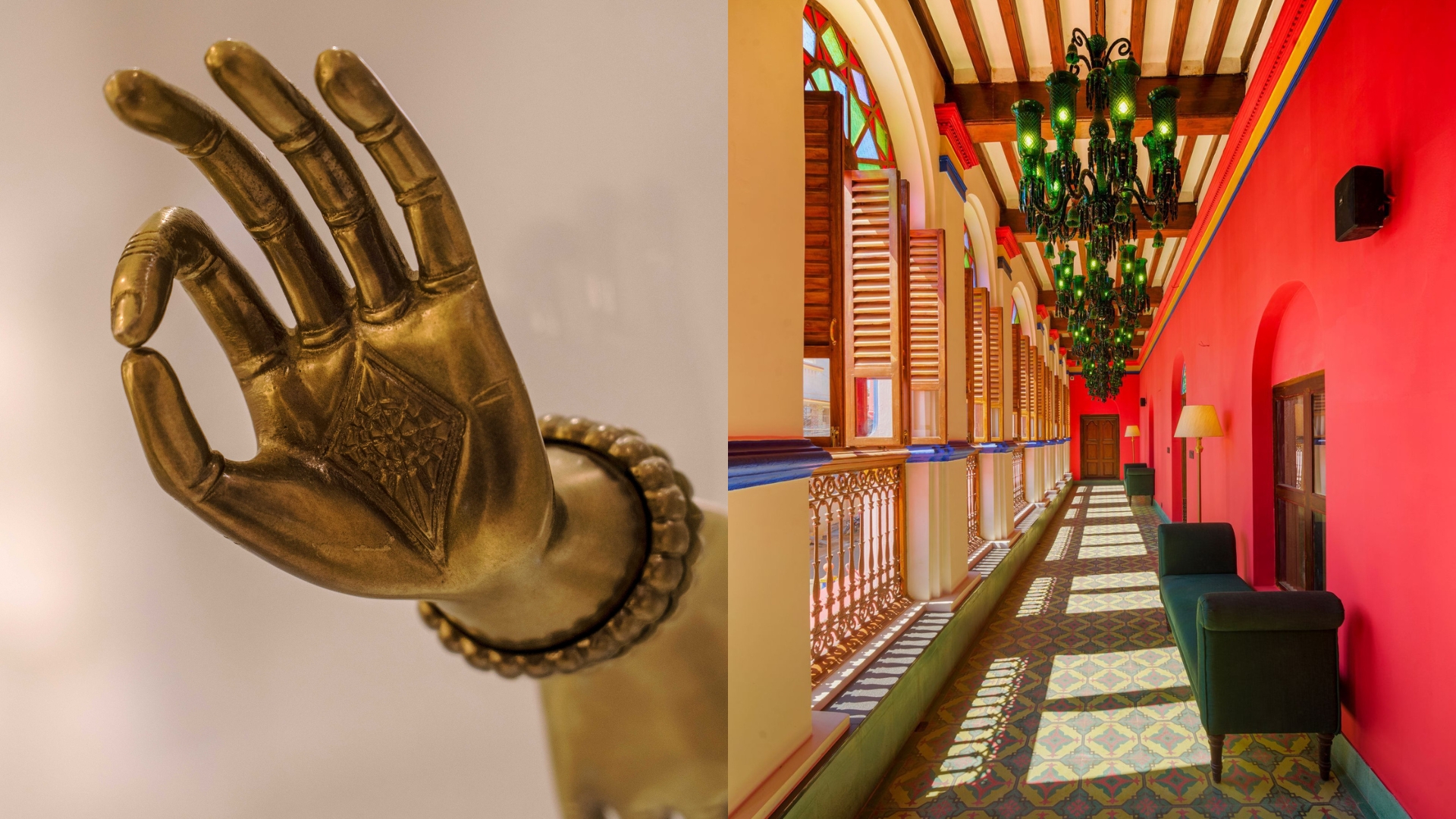
A door handle of a guest room at Six Senses Fort Barwara. Right: The Lotus Palace Kanadukathan is replete with references to local art and craft— like the flooring pattern that evokes asthangudi patterns.
At Brij, artisanal heritage isn't merely decorative. From handwoven Rabari textiles and reclaimed wood furniture at Brij Pola to the slate flooring and Kumaoni woollens at Brij Atmanya, we integrate local craftsmanship into every aspect of the design and experience.
Udit and Anant Kumar
Founders of Brij Hotels

Efforts that matter
Commercial hospitality at scale, especially in urban cities, lacks the potential to focus on a central artistic theme. But Tier II cities present opportunities with deeper cultural backgrounds. “Our design philosophy is a thoughtful conversation between heritage and modernity creating a living narrative of Chandigarh’s vibrant spirit and global outlook,” says Sohaib Kidwai, General Manager, Hyatt Centric Sector 17 Chandigarh. While the hotel does not have many craft focussed experiences, “every space, from the atrium lobby inspired by Punjab’s mustard fields to the all-day dining paying homage to Le Corbusier, tells a story of contrasts and connections,” he elaborates. “We’ve reimagined traditional art, architecture, and local culture through a contemporary lens to create an experience that feels both deeply rooted and refreshingly bold.”
At the newly opened dusitD2 in Fagu, a souvenir shop features locally embroidered goods sold at prices set by the artisans. The front office staff, over 60% of whom are Himachali, also serve as sales reps, proudly promoting the craftsmanship of village women—an approach that reflects the cultural pride synonymous with the Thai hospitality brand. General Manager Ashish Gawari says it is part of their Himalayan strategy. “We are focussed on introducing thoughtfully curated properties that resonate with the aspirations of modern travelers seeking authenticity, tranquility, and transformative experiences in the majestic Himalayas,” he states.
As global hospitality evolves in India, true luxury will reflect where ancient crafts find contemporary purpose, telling stories that travel from ancestral hands directly to the discerning heart of the modern traveller.
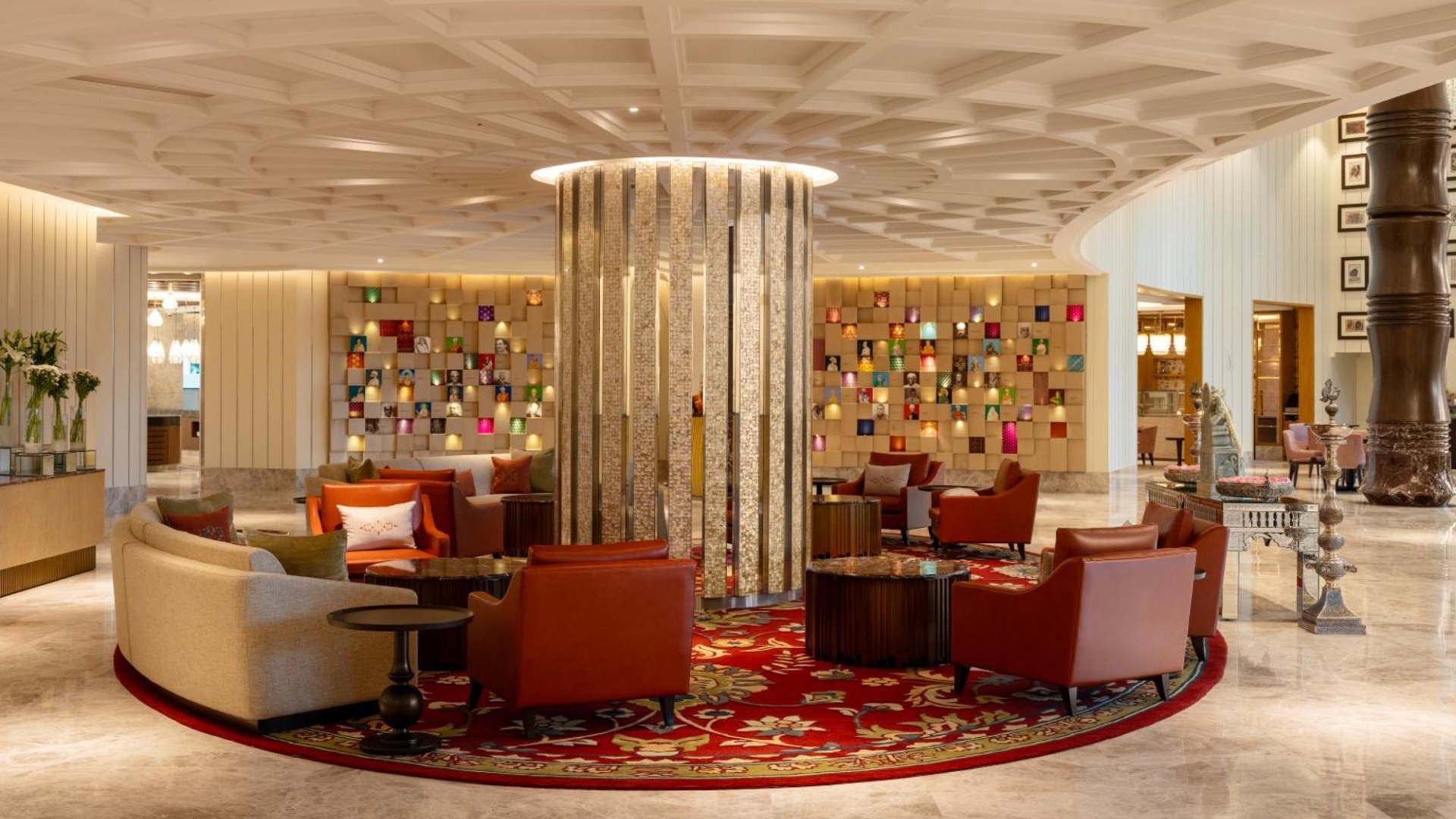
'Art Walk' at The Leela Hyderabad celebrates the cultural essence of the Dakhni region.
Our design philosophy is a thoughtful conversation between heritage and modernity creating a living narrative of Chandigarh’s vibrant spirit and global outlook.
Sohaib Kidwai
General Manager, Hyatt Centric



























